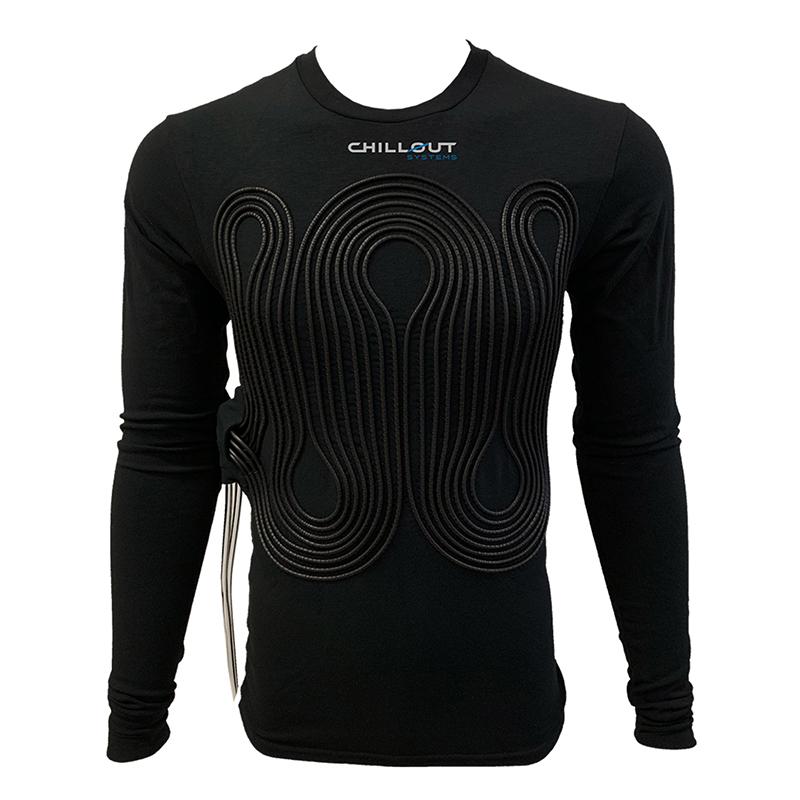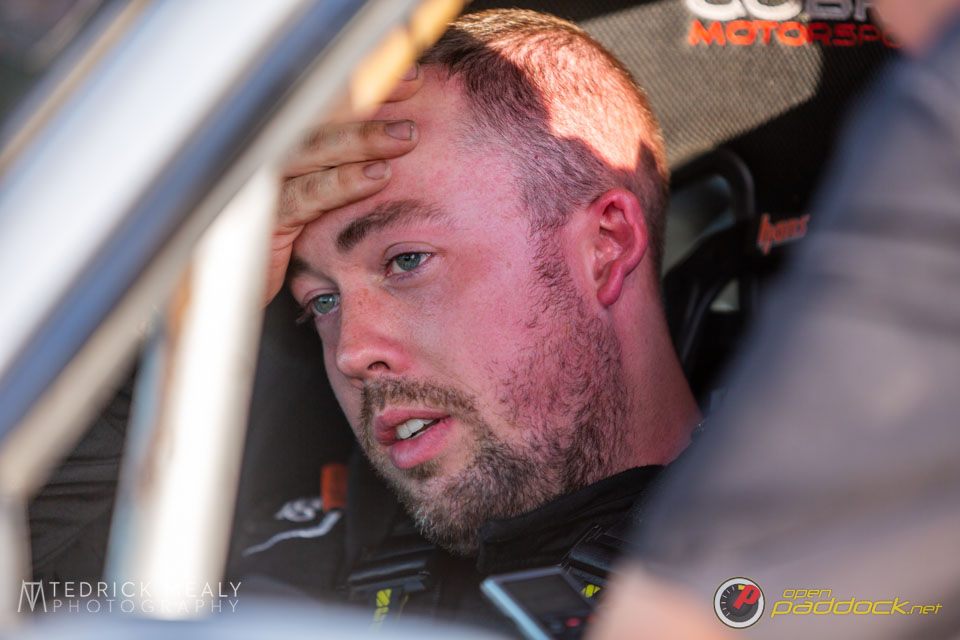Southern Ohio Heat Took its Toll on More Than Just the Cars
The Southern Ohio Forest Rally had a lot of attrition, and most of it was the same we see at every rally. New car builds with technical problems for instance, or a small off breaking a component and there is no spare. It’s rally, and these things happen. What was different this year though was the amount of retirements due to illness, specifically heat exhaustion, that affected drivers and co-drivers alike.
To say the conditions were brutal at SOFR is an understatement. Outside temperatures just before the start were nearly 90 degrees Fahrenheit, but with the added humidity the “feels like” heat index was hotter still. Inside the rally cars temperatures can easily rise a further 20 degrees. Then add a fire suit, helmet, balaclava, and gloves, and a thermometer against the skin can be as high as 130 degrees, and that’s without any physical exertion. And physical exertion there was!
The long stages that everyone was raving about added a further element to bring about illness. The constant tight turns put g-forces on the body making it harder to breath. Co-drivers had to call out a constant stream of notes with barely any break while drivers were wrestling the wheel back and forth for about 20 minutes, then after a short transit, get in line to do it again on the next stage.
Without enough hydration and time to cool the body down, several competitors reached the point of full on heat exhaustion suffering symptoms including dizziness, headaches, and nausea.
Co-driver Ryan Dunham was one of many that had to pull out of the rally because of his heat related illness.
“While motion sickness has never been a problem for me in the rally car, and I come from a hot climate; the combination of extraordinarily twisty and long stages coupled with mistakes on my part in eating and hydration put me on the wrong foot starting the event. I had zero problems on recce even though we were running at the limit of speed allowed. Once I noticed the symptoms I took a Dramamine, but it was too little too late.”
We wanted to know more about how to prevent issues like Ryan and so many others experienced, so we reached out to professional co-driver Rhianon Gelsomino of Oz Rally Pro who also used to be a Physical Education Teacher.
“I’ve rallied in many different conditions all over the world, and I feel there were many factors contributing to co-drivers or in some cases drivers, becoming sick over the weekend in Southern Ohio. The temperatures at the rally and the humidity were something I have only experienced while rallying in Asia. The night stages also played a factor. Drivers tend to be more on and off the gas pedal in the dark, and this can lead to the co-driver feeling unwell.”
Rhianon says that the key to handling these conditions is preparation. “I believe it is important to train your body at temperatures and the length of time to match the stages. Therefore, leading up to these rallies, I plan my training around what I think will be the longest stage time and the temperature I will be dealing with. Sometimes that means training in the heat of the day, to allow my body to become accustomed. Other times I have put a heater on in my gym while running, to acclimatize my body to the heat, high heart rate and similar conditions to the stage. I like to do this while watching rally on-boards.”
She also says to start hydrating well before the event itself “When you know you are coming into a hot event like SOFR, Alex and I always drink a minimum of 2 Liters of water a day, for two weeks prior to the rally, to best prepare our body for the hot and humid conditions. This means we arrive extremely hydrated. I remember a team doctor once saying “If you are peeing clear you are hydrated.”
She says it’s not just important to hydrate before the rally or in the service park, but to have a plan for consuming water on the stages as well. “I always have a 3 Liter camelback in the car. It hangs behind my seat from the roll cage and I have the hose over my shoulder, so I can drink at any time, even mid-stage if there’s a long straight. Many teams use water bottles, and I was drinking the same as 4 bottles of water each loop with my Camelback. This would mean if I was to carry water bottles, I would have needed 8 bottles of water. Four for myself and four for my driver Joseph Burke.”
What you eat is also a major factor according to the Gelsominos. “We see many people eating greasy foods like big burgers and fries, prior to starting the events. It’s better to eat very light. Sandwiches, salads, fruit, or pasta. Keep to foods that are easy for your body to process and breakdown. And don’t eat a lot. If you have heavy or too much food sitting in your stomach, it’s very easy to start to feel sick in high heat on twisty stages”
And she also says to make sure you get enough rest as that can have an effect too. “Sleep is always an issue with all the work we are doing now with reviewing videos, even on rallies without extreme heat. I try to alway get at least 5 hours sleep minimum at events, which is not long, but better than anything less.”
Finally she says that general fitness plays a huge part as well. “Alex and I work very hard to stay fit. If you are really out of shape, your body doesn’t tend to react well in these situations.”
That sentiment is echoed by one of the most fit co-drivers in the championship, Claudia Pullen of River City Rally. “Rally always takes a toll on the body. It is stressful, mental and physically demanding, and it always involves sleep deprivation and malnutrition! For SOFR you also had to add the heat index and the night stages. For me the trick for this race was to try my best to control dehydration and stay awake. Little things like taking off your helmet every opportunity you have, getting out of the car to stretch, and concentrating on your breathing can go long ways under those conditions. I am used to training for my triathlons in even higher temperatures, so SOFR was another day of training…. lucky me?”
There are a number of simple things that every team can do to prevent heat exhaustion. Al Dantes Jr. told us he and his co-driver had a plan from the start “One thing we did differently was between and after each stage we would remove our helmets, get out of the car, and work on getting fresh air as soon as possible. I was working on breathing routines to bring the body back under control. We also removed our helmets and suits immediately once we passed the beige boards after finishing stages 2, 4, and 6. Our suits were dripping wet with sweat and we had nausea, but we never puked!”
Not every team has a fancy air conditioned hauler to go into for a debrief once they did get back to service, but Chris Greenhouse had a plan where his team kept a car idling in service with the air conditioner on full blast waiting for them. Another simple tip came from Ozgur Simsek who offered that teams can use their route book to direct more air inside the car on transits.
Air flow is another key component. Your body sweats to regulate temperature, but without airflow that water on the skin can’t evaporate and cool you back down. Rhianon says “Air circulation inside the car is really important. Joseph and my car had a really good roof vent and I was able to have two vents pointing at me during the stage. I think all cars should have some type of roof air vent to help with air flow.”

There are more advanced solutions to keep drivers and co-drivers cool as well. Calvin and Kelsey of Cooper Autoworks installed a cool suit system by Chillout. The system works by pumping cool liquid through small tubes that snake back and forth inside a special shirt that is worn under their racing suits. “Even though motion sickness did affect me at the end, I wouldn’t have made it through this rally without the Chillout system” Kelsey said.
Although heat exhaustion appeared to be the primary issue, teams should also consider the stage characteristics no matter the temperature. Rhianon noted “Looking at the maps for SOFR, it was very obvious that the stages were technical and long. Therefore, if you know you are prone to possibly getting sick, take a ginger tablet, travel sickness tablet or wear a patch out of precaution.”
Heat exhaustion is no joke, and in the worst case can even lead to heat stroke. Let’s hope that in the future competitors follow the recommendations outlined above and finish the rally with smiles on their faces and their sick bags empty.

